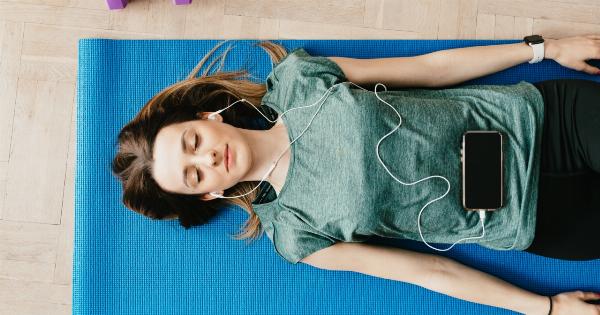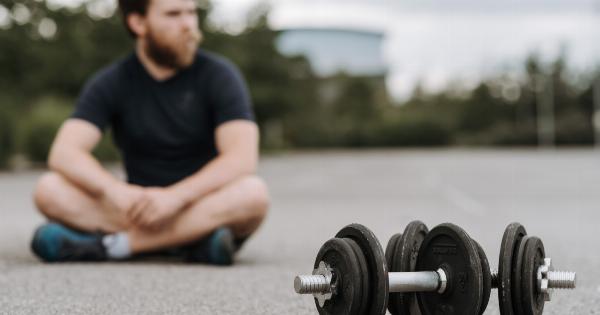Headphones have become a vital accessory for most people, whether it’s for gaming, listening to music, or watching movies. Unfortunately, some headphones can cause damage to your hearing.
In this article, we will discuss which headphones can be harmful and how to prevent hearing damage.
What Causes Hearing Damage?
Hearing damage occurs when the level of sound is too loud and sounds waves damage the hair cells in your ear. These hair cells are responsible for translating sound signals to the brain, and once they are damaged, they cannot repair.
The damage can range from temporary to permanent. If you’re exposed to loud noise for a short period, you might experience temporary hearing loss, commonly known as noise-induced hearing loss (NIHL).
However, if you’re regularly exposed, the damage can become permanent, resulting in permanent hearing loss.
Which Headphones Can Be Harmful?
Not all headphones can cause hearing damage. Some headphones are designed to produce sound at low levels, while others can produce sounds at high levels that can be damaging to your hearing. Here are types of headphones that can be harmful:.
In-ear Headphones
In-ear headphones are small earpieces that fit inside your ear canal. They are notorious for delivering high-quality sound, but they can also be dangerous because they sit directly in your ear.
In-ear headphones are treacherous because they can block out environmental sounds, which can tempt you to increase the volume. Doing so places your hearing at risk, particularly if you listen for an extended period.
Over-Ear Headphones
Over-ear headphones are larger and usually cover your entire ear, unlike in-ear headphones. They are designed to reduce environmental sounds while offering high-quality sound.
Over-ear headphones can also cause hearing damage if the volume is too high for an extended period.
On-Ear Headphones
On-ear headphones are somewhere in the middle of in-ear and over-ear headphones. They sit over your ear and are more comfortable than in-ear headphones. However, they can still be dangerous if you listen to them at high volumes for an extended period.
How to Choose Safe Headphones
When it comes to choosing safe headphones for your hearing, you need to consider several factors. Here are some factors to consider:.
Noise-Canceling Technology
Noise-canceling headphones use microphones to pick up environmental sounds and produce sound waves that cancel them out, allowing you to listen at a lower volume. This feature is crucial in reducing your exposure to loud music and sounds.
Volume Limiting Features
Volume limiting features are essential when it comes to choosing safe headphones. These features limit the maximum volume that you can set your headphones to, preventing you from raising the volume to dangerous levels.
Headphone Fit and Comfort
If headphones don’t fit correctly, then you’re likely to keep raising the volume to try and hear better. This is why choosing headphones that fit snugly and comfortably is essential.
High-Quality Audio
High-quality audio is crucial when choosing headphones. High-quality headphones produce clear sound that doesn’t require raising the volume to hear better. This feature reduces your exposure to loud music that can damage your hearing.
Tips for Safe Headphone Use
Using safe headphones is not enough to lower your risk of hearing damage; using headphones safely is vital. Here are some tips for safe headphone use:.
Take Breaks
Regular breaks when using headphones are essential in preventing hearing damage. Breaks give your ears time to rest from the loud noise produced by the headphones. Make sure to take a ten-minute break for every hour of continuous headphone use.
Limit the Volume
As we’ve seen, high volume is one of the leading causes of hearing damage with headphones. Make sure to keep the volume to a safe level, and if you have safe headphones with volume limiting features, make use of them.
Use Earplugs in Loud Environments
If you’re in an extremely loud environment, then using earplugs underneath your headphones can help reduce your risk of hearing damage. Earplugs reduce the amount of sound that enters your ear while still allowing you to listen to your headphones.
Conclusion
Headphones are incredibly useful but can also be harmful to your hearing. When choosing safe headphones, consider features such as noise-canceling technology, volume limiting features, headphone fit and comfort, and high-quality audio.
Make sure to use headphones safely by taking breaks, limiting the volume, and using earplugs in loud environments. Practicing safe headphone use will help you avoid hearing damage and keep your hearing healthy.































